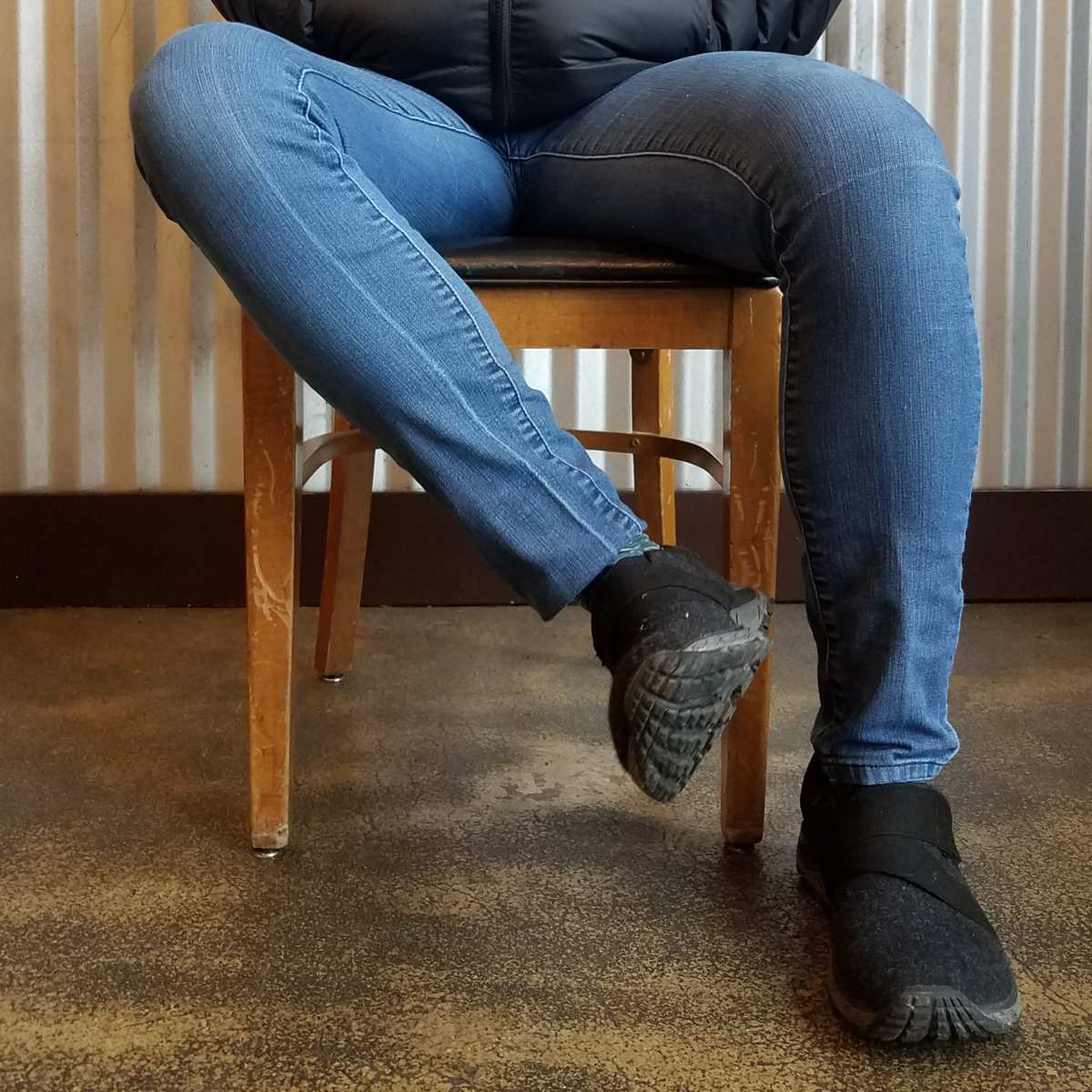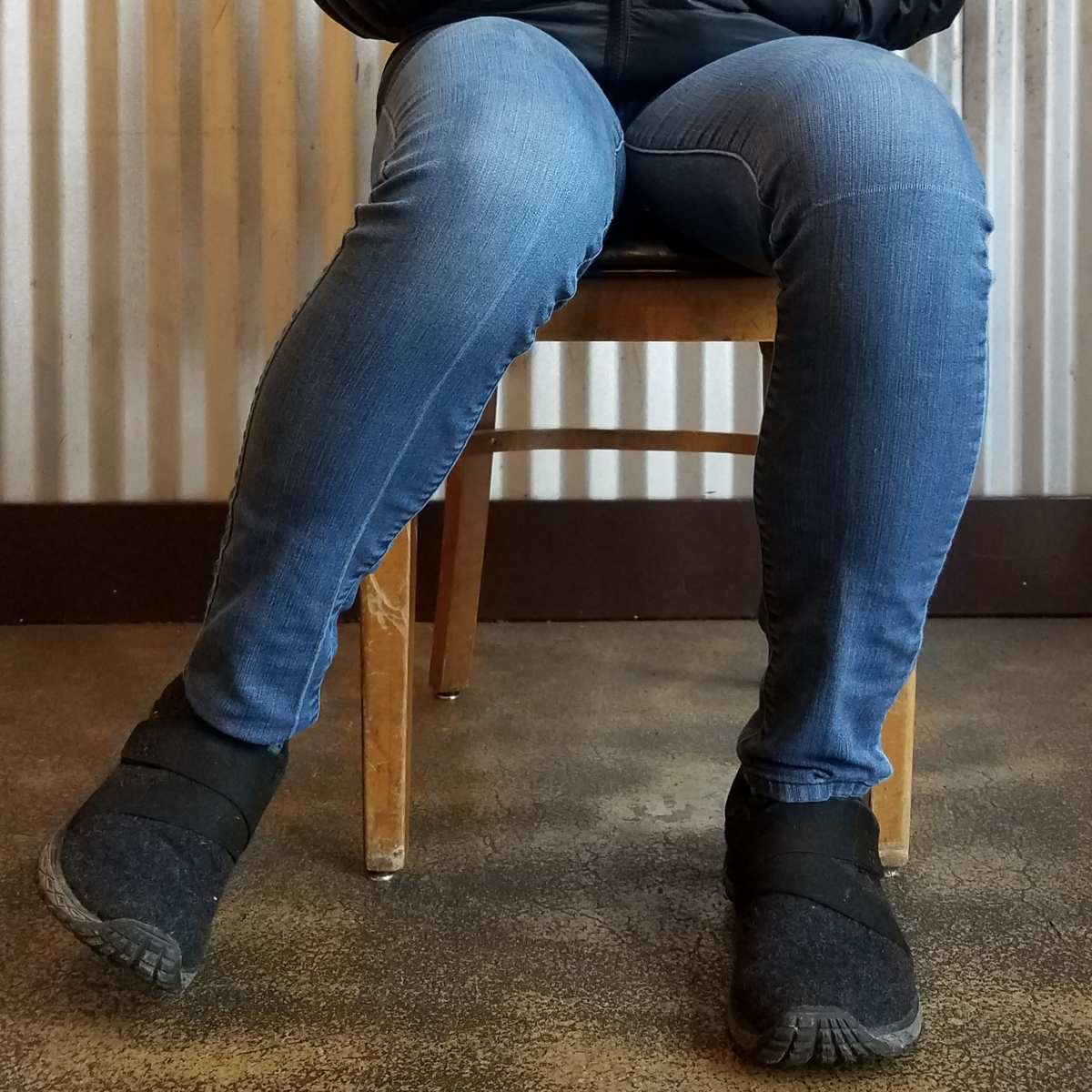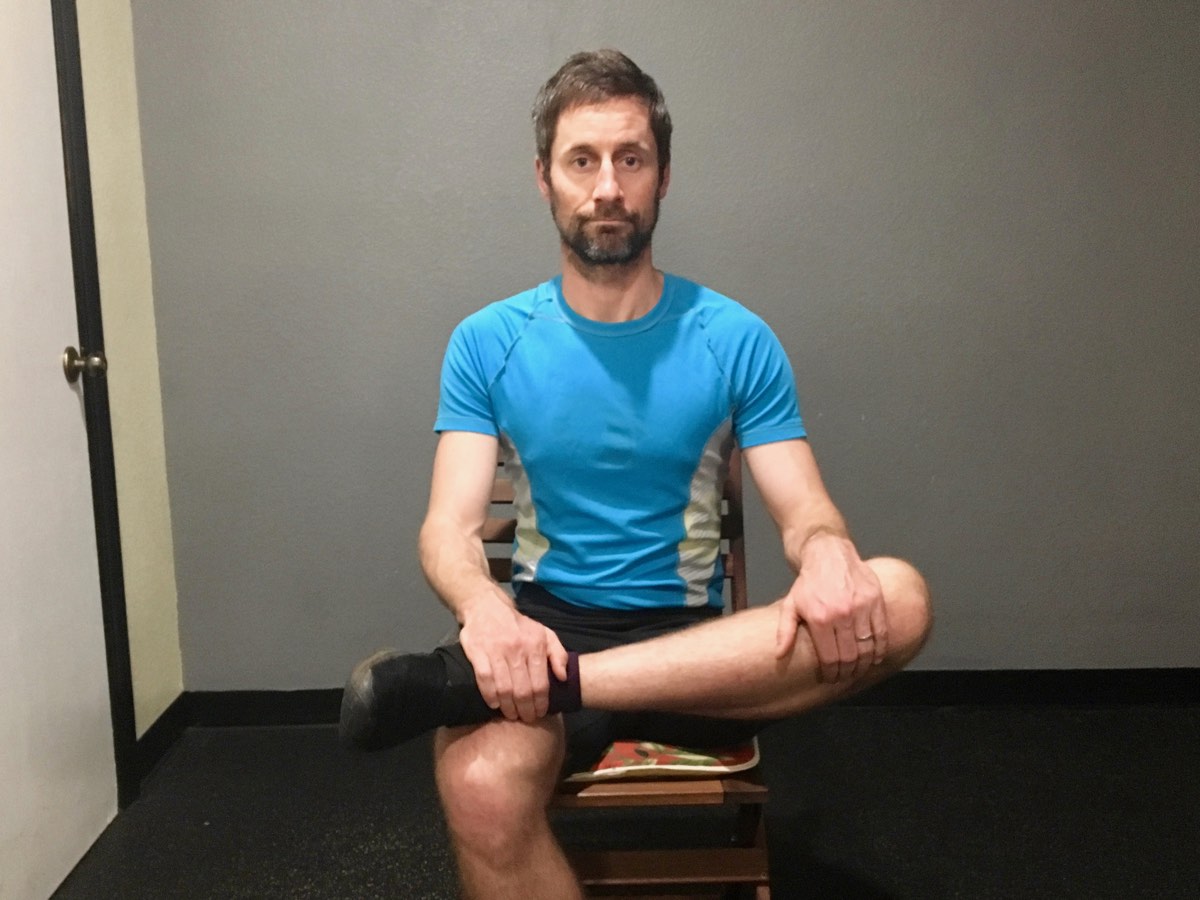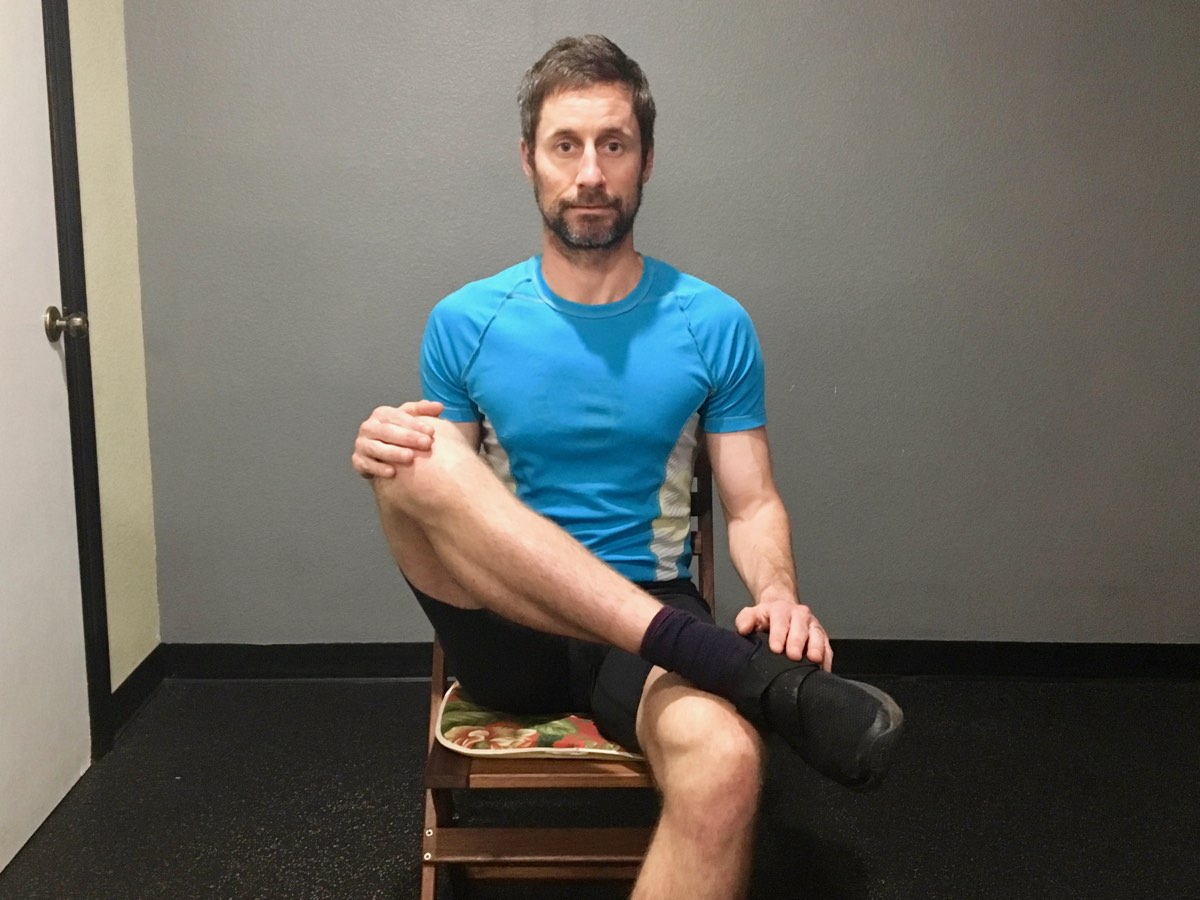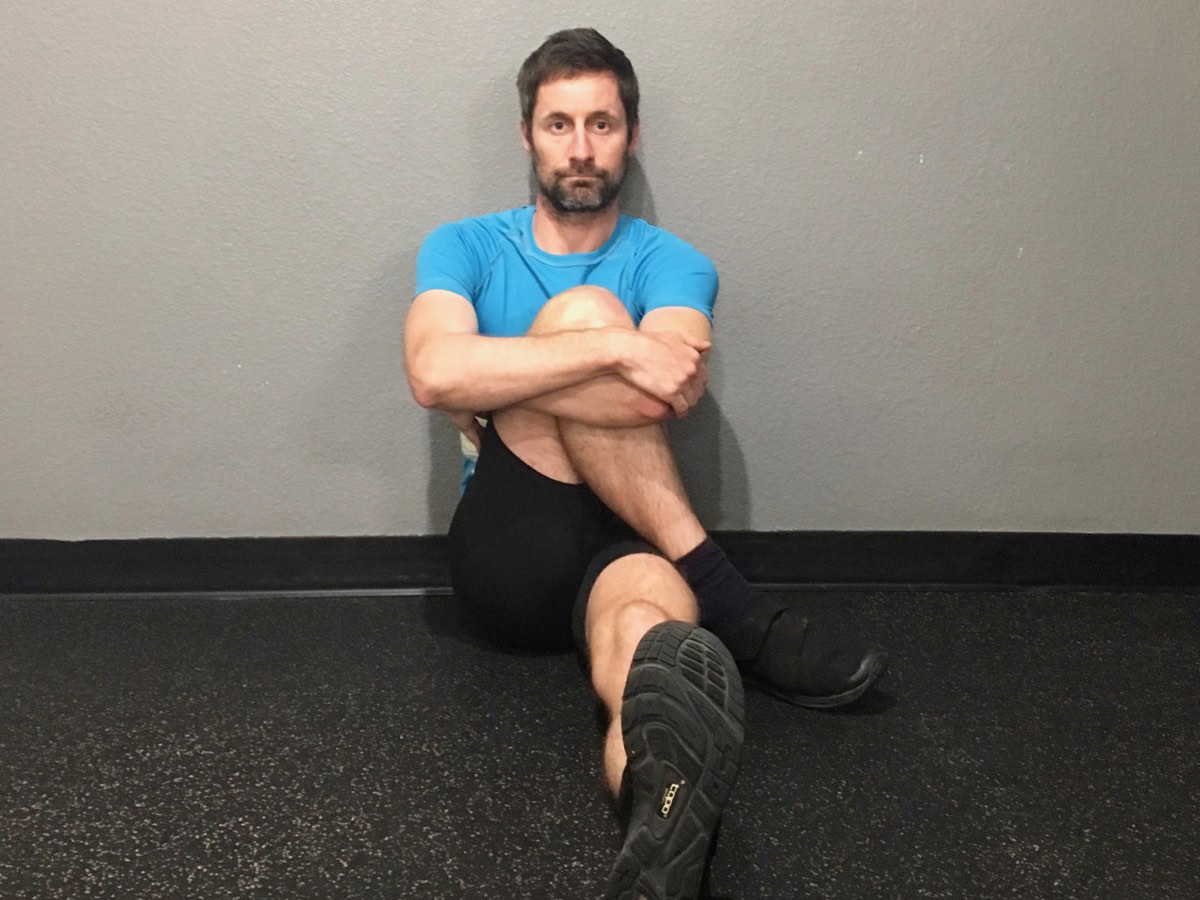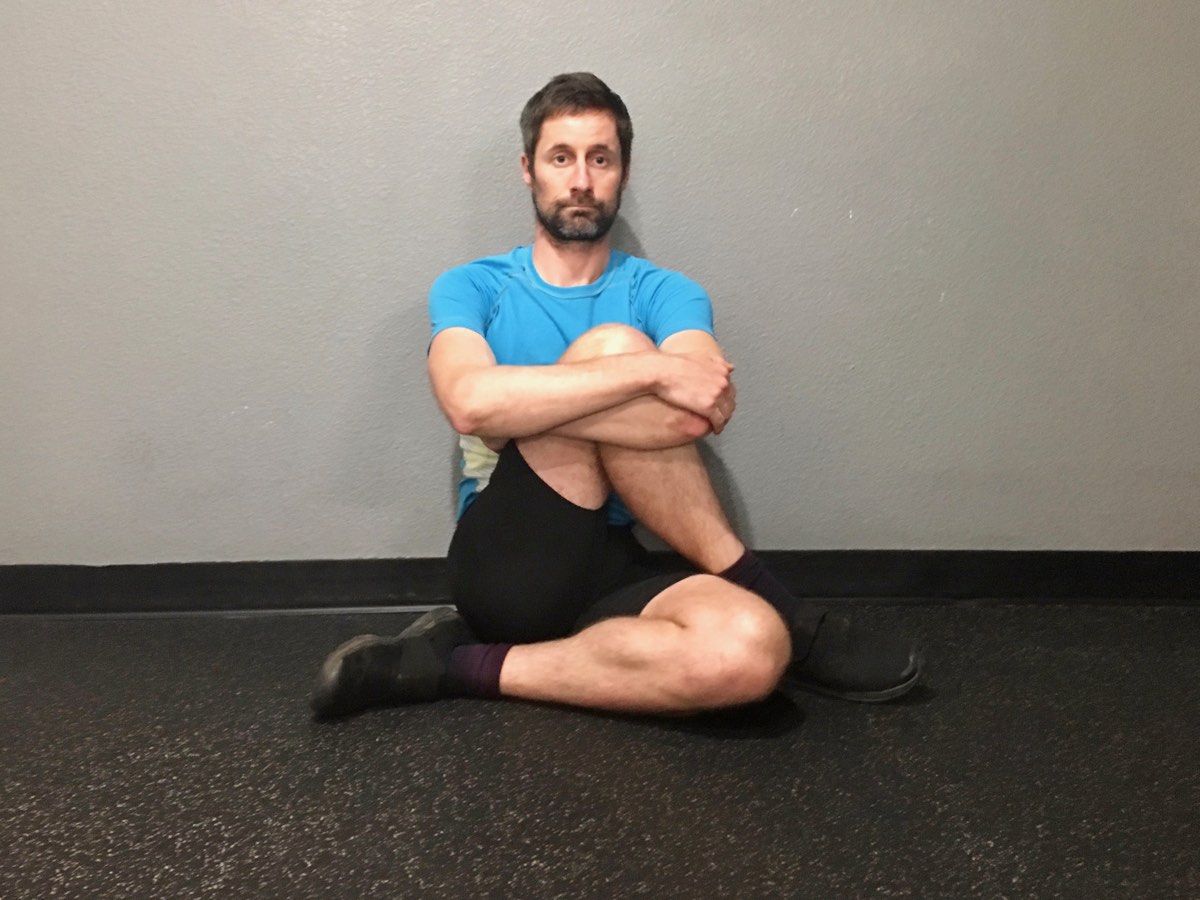 Fifteen years ago when I hurt my knee, I had my first experience with physical therapy (PT). The orthopedic doctor saw nothing seriously wrong with it and thus referred me to PT. Back then, I was a stubborn and arrogant young runner and coach who scoffed at the idea of PT possibly helping. But sure enough, after a single visit, my knee pain vastly improved!
Fifteen years ago when I hurt my knee, I had my first experience with physical therapy (PT). The orthopedic doctor saw nothing seriously wrong with it and thus referred me to PT. Back then, I was a stubborn and arrogant young runner and coach who scoffed at the idea of PT possibly helping. But sure enough, after a single visit, my knee pain vastly improved!
During my second visit, my physical therapist, Mike Ripley, examined my hip. He noted a significant range-of-motion loss in hip rotation. How, exactly, hip rotation had anything to do with my knee I was uncertain. But when my pain completely resolved after three visits, I was sold not only on the importance of hip-rotation mobility, but also on the systems-based approach to injury treatment.
(As a postscript, I was also hooked on physical therapy as a career. Mike quickly became my first professional mentor, and helped me get accepted to PT school two years later).
That encounter began a pattern I continue to this day: gain access to helpful tools and pass them on to my fellow runners. After that visit, I took the hip stretch from Mike and passed it on to my high-school athletes to address their nagging injuries, including low-back, knee, foot, and ankle pain. And it seemed to work every time! The stretch soon became known as the ’Miracle Butt* Stretch.’ If you did this stretch, your pain would vanish.
*We often substituted a slightly shorter, edgier word.
I didn’t understand how or why it worked, but we did it with unwavering faith. Fast forward a decade into my own clinical practice and I still have old interventions that today stand the test of clinical and research scrutiny. The Miracle Butt Stretch stands foremost among them.
What is Hip Rotation?
Hip rotation is defined by how the femur bone in the thigh moves (this can be confusing since the foot, when the knee is flexed, will move the opposite direction):
- External rotation is an outward motion of the femur (but inward motion of the foot).
- Internal rotation is an inward motion of the femur (but outward motion of the foot).
In a seated or prone position, normal motion is 45 degrees of each direction.
The Role of Hip Rotation in Efficiency and Injury Prevention
More than any other sport, running is a straightforward motion. As such, the dominant motions occur in the side (sagittal) plane. The ankle dorsi- and plantar flexes, the knee flexes and extends, and the hip swings forward and back. But subtle–and vitally important–motions occur in the other planes. Bones and joints bend, slide, and glide in the frontal plane (such as pronation and supination) while others rotate in the transverse (top-down or coronal) plane.
While it’s not important to understand all these subtle motions in this forum, it is important to recognize that these motions act as powerful counterbalancing actions in the running system. Namely, it is pertinent to recognize that when the hip needs to have adequate rotation to counterbalance the other motions in our running stride.
Inquisitive biomechanics nerds extra credit: When the femur flexes or drives forward, it needs to externally rotate, and during stance and pushoff, it should internally rotate. Counter rotations then occur at the foot and ankle.
As such, a loss in hip rotation can have powerful primary and second-order effects in the system.
Effects of Hip-Rotation Stiffness
Most runners are acquainted with hip rotation stretching only when suffering from a hip injury. They are commonly prescribed for posterior-hip issues such as piriformis syndrome–a condition where the piriformis muscle, a deep rotator, becomes dysfunctionally tight or weak and impinges upon the nearby sciatic nerve–or causes other hip pain.
This primary deficit may cause hip pain, but rotational stiffness is more likely to have more subtle second-order effects in the body. The knee is a frequent victim of stiff hip rotation. The femur needs to rotate slightly during running, as well as during everyday activities like walking, stepping, and squatting. Even a mild rotation deficit could cause significant knee range-of-motion loss!
The same is true for the foot and ankle. If the hip cannot rotate through as we drive our leg forward, excessive and asymmetrical strain can occur at the foot and ankle during the initial contact. On the other end, rotational stiffness in the hip can cause compensations and strain at the pelvis and low back.
Long story short, hip rotation matters! In fact, at a recent advanced manual-therapy course I attended, it was noted that efficient hip rotation should be the primary treatment objective before addressing any other motion.
Self-Testing Hip Rotation: Cross-Legged Test
External rotation deficits are more common in runners. Too much sitting may play a role in thieving external-rotation range. So, too, can general running inefficiencies such as overstriding and inadequate hip hinging. However, the hip rotators simply have to work very hard during the running–especially on technical and vertical trail running–to steady the shin and thigh as we land and pass over the leg in stance.
To self-test hip external rotation, try the cross-legged test. Sit in a normal-height chair (where your hip is flexed about 90 degrees). Cross the stretch leg on top of the opposite knee. Ideal motion for a healthy runner is about 90 degrees, or a horizontal shin:
Significant range-of-motion loss will have the stretch knee elevated, and the shin sloping down:
This indicates significant and actionable hip external-rotation stiffness.
The Miracle Butt Stretch
There have been a couple iterations over the years, but this stretch is among the most potent and easy to execute. First, sit long-legged on the floor. If you are very stiff, you may benefit from sitting against a wall. Flex up the stretch leg and place it across the other straightened leg:
Hug the knee to the chest and lean forward. To accentuate the stretch, now flex the straightened leg so the foot sits beside the hip:
There are two more strategies to accentuate this stretch. First, do your best to have both sit bones stay in contact with the ground. Second, keep the trunk as straight and forward-hinged as possible:

A side view of the Miracle Butt Stretch for the right hip, with the torso straight and hinged forward from the hip to accentuate the stretch.
Because it is difficult and painful, most runners really hate this stretch! But bear in mind, it is not just muscles we are testing and stretching. As discussed in the Performance Mobility series, muscles can be stiff but so can ligaments and joint capsules. The latter are tough connective tissues that, when tight, can be very difficult (and painful) to stretch. If these stretches are very tight and painful, ease off the intensity but be persistent!
Work on this stretch in bouts of 30 to 60 seconds, alternating sides (emphasizing the restricted side), for several minutes, at least once (but ideally twice or three times) per day. The goal is to achieve a horizontal shin in the seated cross-legged test, or the standard 45 degrees in pure rotation. Retest in these positions to track your progress.
Lastly, if you begin to feel aches and pains anywhere in your legs (and you’ve passed muster in the other aspects of the Performance Mobility series), test your rotation! And if you’re stiff, make the Miracle Butt Stretch a part of your daily (and nightly) routine!
Call for Comments (from Meghan)
- So, do you pass the test for hip rotation? If not, which side is tighter or is your tightness symmetrical?
- Give the Miracle Butt Stretch a try and report back on how it goes.
